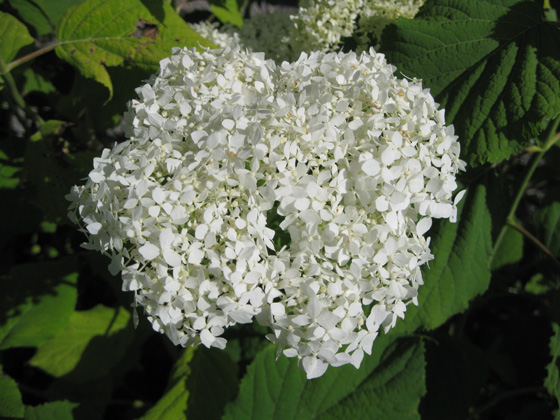| PSC 2620: Woody Trees and Shrub | Course Home | Week 10 |
Hydrangea macrophylla - Hydrangea
Plant Viewer
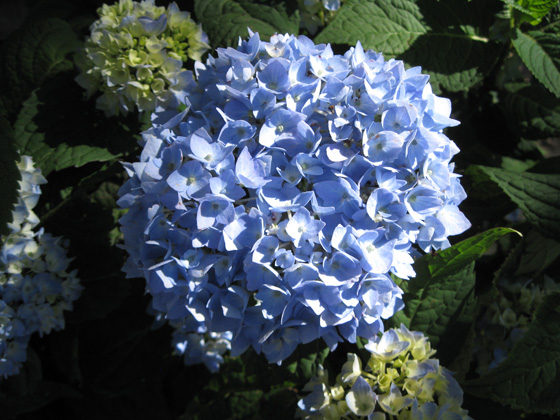 |
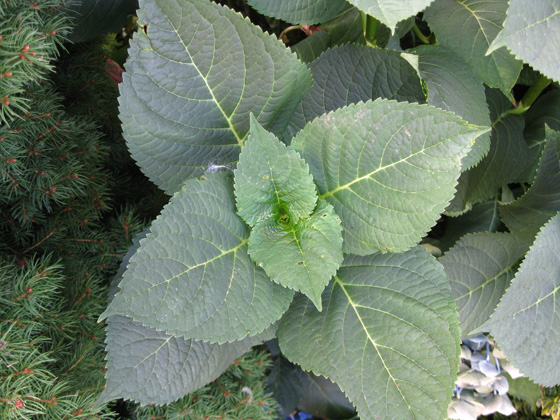 |
| Hydrangea macrophylla has a large corymb of small blossoms. It has the interesting characteristic that the flower color is impacted by the pH of the soil. | The leaves are large and obovate in shape. They are a dark green color and have large serrations. They are arranged oppositely on the stem with each pair of leaves rotating 90 degrees around the stem from the last pair of leaves. |
Plant Description
Hydrangea macrophylla is one of the most showy flowering shrubs during the summer months and is commonly found throughout moist climates with acidic soils. It grows 3-6 feet high and wide, but can grow larger in ideal conditions (which are not found in Utah), and has a strong round form. It rarely branches, but rather thick stems grow quickly from the ground to fill in the plant. It grows best in more temperate conditions and is borderline for our area.
The large (4-8 inches long) leaves are obovate or elliptic in shape with large serrations along the margin of the leaf with the tip of the leaf forming an elongated point. The veins are set into the leaf, making the venation very noticeable. Leaves can vary quite a bit in color from a bright green to a dark and lustrous green. The leaves are arranged oppositely and new leaves and new growth form at the terminal bud, causing the new leaves to emerge in tightly rolled between the existing leaves before they unfurl as they mature.
In the summer Hydrangea puts on a spectacular flower display. The large corymbs of small flowers are either rounded or flat-topped. They can be up to 10 inches wide and are found in copious amounts on the plant. Bloom color in many cultivars varies depending on the soil pH, with acidic soils creating blue and purple colored blossoms, while alkaline soils will create pink blossoms. The blossoms form on the previous year's growth, so trim the shrub after flowering is completed.
Landscape Use
It is a great selection for a shrub border or perennial border, where its flower display will make it really pop in the landscape. In more temperate climates I have seen it often used as a loose hedge plant with great effect.
Points of Interest
Winter dieback is common in our climate, but can be minimized by siting the plant in a protected location. I recommend planting it in part-sun to full-shade, but have seen several good specimens (especially Annabelle) in full sun.
Hydrangea macrophylla needs plenty of water to prevent it from wilting. If a plant has become droopy, ample water will typically revive it quite quickly.
Notable Cultivars
Endless Summer
This may the best-known designer plant. The marketing campaign for Endless Summer has nearly turned it into a household name. It grows 3-5 feet high and wide and famously blooms continually throughout the summer and into fall.
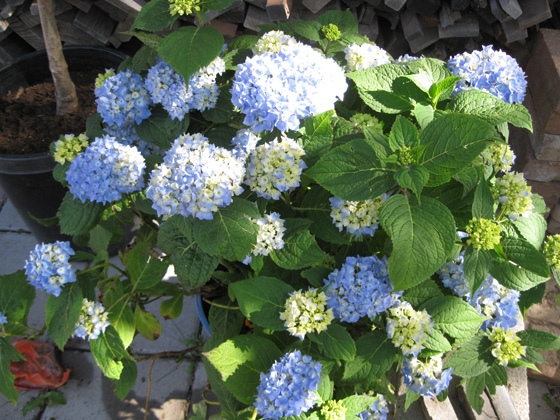
Hydrangea paniculata 'Pinky Winky'
The long-lasting flowers form in conical panicles (instead of the rounded or flat corymbs of Hydrangea macrophylla). They emerge white before turning a pink color in the end of summer. Hydrangea paniculata is hardier than Hydrangea macrophylla, performing well in zones 3-9.

Hydrangea paniculata 'Limelight'
The cone-shaped panicles of flowers are a light limey green color. Hydrangea paniculata is hardier than Hydrangea macrophylla, performing well in zones 3-9.
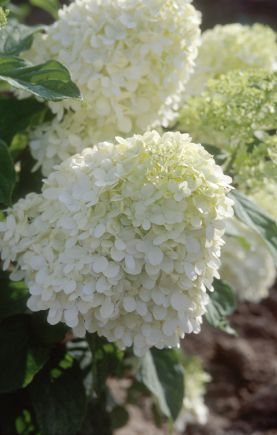
Hydrangea arborescens 'Annabelle'
Very large corymbs of white blossoms (up to a foot wide) bloom during the summer. It can be cut back nearly to the ground every winter.
